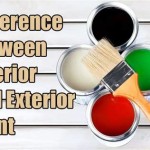Unlocking Your Interior Design Aesthetic: Deconstructing the Mr. Kate Middleton Style Quiz Let
The quest to define one's interior design style can often feel overwhelming. A vast landscape of trends, historical periods, and personal preferences compete for attention, leaving individuals unsure where to begin. To navigate this complexity, many turn to online quizzes designed to provide tailored style assessments. One such resource, often referenced amongst design enthusiasts, draws a somewhat unconventional parallel: the "What's My Interior Design Style Mr. Kate Middleton" quizlet. This article aims to dissect the core principles behind this type of quiz, explore its potential effectiveness, and offer a broader perspective on how individuals can definitively uncover and cultivate their personal interior design style.
While the specific "Mr. Kate Middleton" quizlet may not be universally known, its underlying framework represents a common methodology used by various interior design style quizzes. These quizzes typically present a series of visual or textual prompts related to preferences in color palettes, furniture styles, architectural details, and overall ambiance. By analyzing the responses and comparing them against a pre-defined database of interior design styles, the quiz generates a result suggesting the most compatible aesthetic for the user.
The appeal of these quizzes lies in their ability to distill complex design concepts into a manageable and interactive format. For individuals new to the world of interior design, they offer a starting point for understanding the diverse range of available styles and identifying potential areas of interest. However, it's crucial to approach these quizzes with a critical eye, recognizing their inherent limitations and understanding the nuances of style identification.
Understanding the Mechanics of Interior Design Style Quizzes
Interior design style quizzes, at their core, operate on a principle of pattern recognition and association. They present a series of multiple-choice questions or image selections designed to reveal individual preferences in key design elements. These elements typically include, but are not limited to:
- Color Palette: Preferences for warm, cool, neutral, or vibrant color schemes. Specific color families (e.g., blues and greens, reds and oranges) also play a significant role.
- Furniture Style: Choices between modern, traditional, minimalist, bohemian, or other distinct furniture aesthetics, considering factors like material, silhouette, and detailing.
- Material Preferences: Inclinations towards natural materials like wood, stone, and linen versus synthetic materials like metal, glass, and plastics.
- Architectural Details: Appreciation for specific architectural features, such as exposed brick, high ceilings, ornate molding, or clean lines.
- Overall Ambiance: Desired atmosphere for a space, spanning from cozy and inviting to sleek and modern to eclectic and unconventional.
The quiz algorithm then correlates these responses with pre-defined profiles representing various interior design styles. For example, a strong preference for neutral colors, minimalist furniture, and clean lines might suggest a leaning towards Scandinavian or contemporary design. Conversely, a fondness for rich textures, ornate details, and antique furniture could indicate an affinity for traditional or Victorian styles.
The accuracy of the quiz depends heavily on the comprehensiveness of its database and the sophistication of its algorithm. A well-designed quiz will incorporate a wide range of styles, account for stylistic overlaps, and provide nuanced interpretations of individual responses. However, even the most advanced quizzes are ultimately limited by their reliance on pre-defined categories and their inability to fully capture the subjective nature of personal taste.
The Potential Benefits and Limitations of Style Quizzes
While style quizzes can serve as a helpful starting point for exploring interior design, it's essential to acknowledge their limitations and avoid treating them as definitive pronouncements of personal style. The benefits can include:
- Introduction to Design Styles: Providing a broad overview of different interior design styles and their defining characteristics. This can be particularly helpful for individuals unfamiliar with formal design terminology.
- Inspiration and Direction: Offering inspiration by suggesting potential design avenues to explore. The quiz results can serve as a springboard for further research and visual exploration.
- Identification of Preferences: Helping individuals identify their underlying preferences in color, furniture, and overall ambiance. The questions can prompt self-reflection and a deeper understanding of personal taste.
However, the limitations are equally important to consider:
- Oversimplification of Style: Reducing complex design concepts to easily digestible categories. This can lead to an oversimplified understanding of style and a failure to appreciate the nuances and variations within each category.
- Lack of Personalization: Failing to account for the unique individual experiences and perspectives that shape personal style. Quizzes often rely on broad generalizations and may not accurately reflect individual tastes.
- Dependence on Visual Cues: Primarily relying on visual cues and neglecting the importance of functionality, lifestyle, and personal history in shaping interior design choices.
- Potential for Misinterpretation: Misinterpreting responses or assigning inaccurate style classifications based on limited information. Quiz results should be viewed as suggestions rather than definitive conclusions.
Therefore, individuals should use style quizzes as a starting point for their interior design journey, supplementing the results with further research, experimentation, and consultation with design professionals.
Beyond the Quiz: Cultivating a Personal Interior Design Style
True interior design style is not merely a label assigned by an online quiz. It is a reflection of individual personality, experiences, and lifestyle. Cultivating a genuine and authentic style requires a more holistic approach that goes beyond simply answering pre-defined questions. Some steps toward developing a personal interior design style include:
- Self-Reflection: Conduct a thorough self-assessment of personal preferences, lifestyle needs, and desired atmosphere for the space. Consider what makes you feel comfortable, inspired, and at peace.
- Visual Exploration: Immerse yourself in visual inspiration from various sources, including magazines, websites, social media platforms, and real-life environments. Pay attention to details that resonate with you and identify recurring themes in your preferences.
- Material Experimentation: Explore different materials, textures, and finishes to understand how they affect the overall look and feel of a space. Experiment with mixing and matching different materials to create unique combinations.
- Functionality Considerations: Prioritize functionality and practicality in your design choices. Consider how the space will be used and make decisions that support your daily routines and activities.
- Gradual Implementation: Start with small changes and gradually incorporate new elements into your space. This allows you to experiment with different ideas and refine your style over time.
- Professional Guidance: Consider seeking guidance from an interior design professional who can provide personalized advice and help you translate your vision into a cohesive and functional space.
Ultimately, the most important aspect of interior design is creating a space that reflects your unique personality and supports your desired lifestyle. While tools like the "Mr. Kate Middleton" style quizlet can be a helpful starting point, the journey to discovering and cultivating your personal interior design style is an ongoing process of exploration, experimentation, and self-expression.
The use of keywords like "Mr. Kate Middleton" in the context of a quizlet focusing on interior design styles highlights the often playful and somewhat unconventional approaches used to engage users in exploring design concepts. The connection is likely intended to draw attention and create a memorable association, rather than being a literal representation of the subject matter.
Therefore, while these online quizzes offer a convenient and accessible way to explore the vast world of interior design, individuals should approach them with a critical awareness of their limitations. The key to unlocking your authentic interior design style lies in a deeper understanding of your personal preferences, lifestyle needs, and the power of self-expression through thoughtfully curated spaces.

Max Rollitt English Country Home Interior Design 1 The Glam Pad

Want To Have A Trendy Home Cover It In Clutter Like Princess Anne Daily Mail

Ine Harrowby Interior Design Dining Room Chintz Persian Oriental Rug The Glam Pad

7 Home Influencers You Need To Follow On Instagram And Their Top Interiors Tips O

Laurence Llewelyn Bowen Explains What To Do With All Your Unread Books Edinburgh Live

Kate Middleton Wears Green Burberry Suit To Welcome Norwegian Royals See The Photo

Interior Design Expert Reveals The Tiny Detail That Makes Your House Look And Feel More Expensive Daily Mail

7 Home Influencers You Need To Follow On Instagram And Their Top Interiors Tips O

I M An Interior Design Expert 80s Decor Is Back But Here S The Colours To Avoid Scottish Sun
When Did Beige Become Evil
Related Posts








